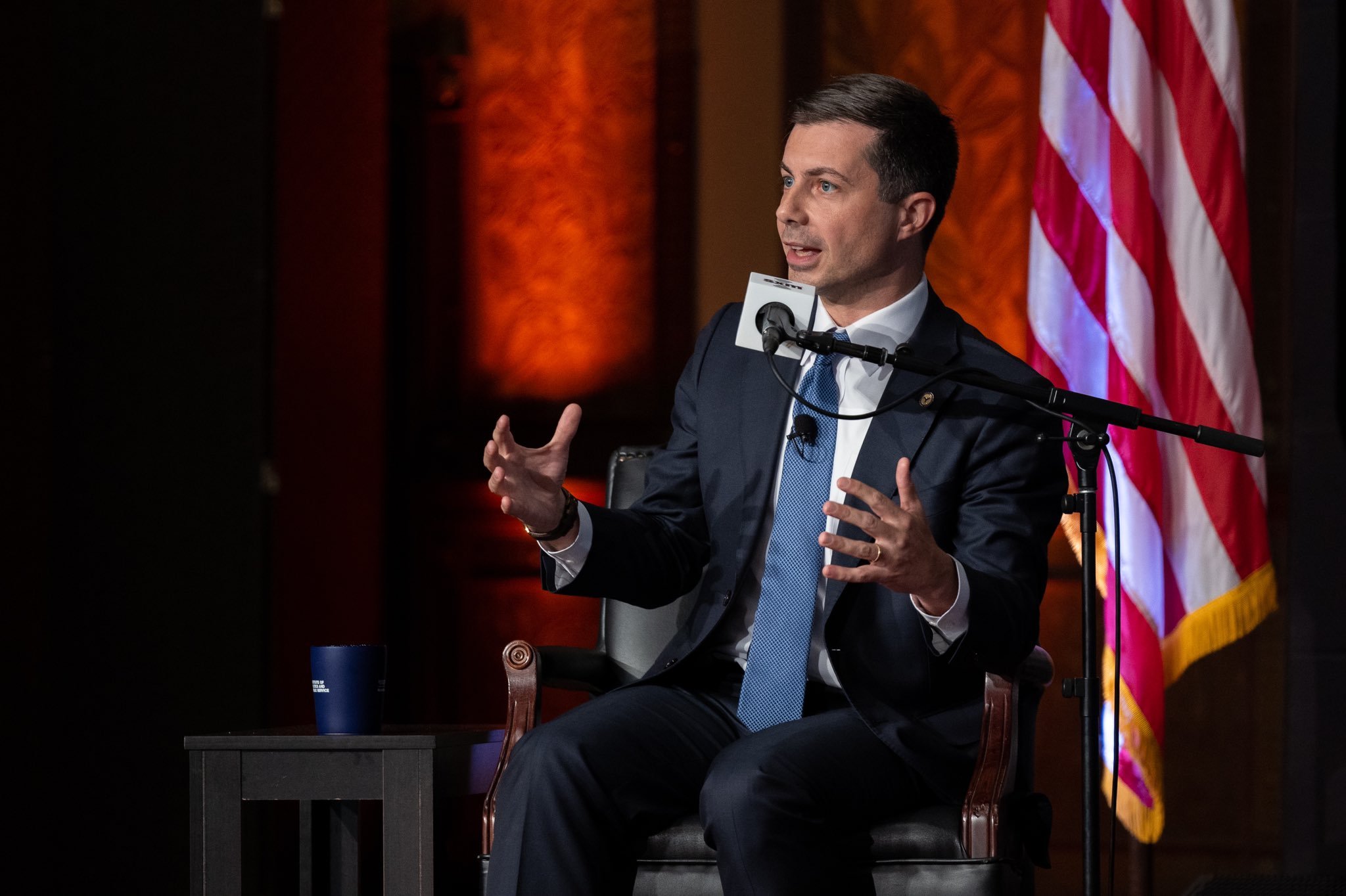The Challenges and Opportunities of America’s Coming Infrastructure Investment
GU Politics
ASHER MAXWELL: When Secretary Pete Buttigieg visited Georgetown on Oct. 11, he acknowledged the herculean task the new Infrastructure Investment and Jobs Act presents to him and his colleagues, while emphasizing the generational opportunity it provides to revitalize American infrastructure. Buttigieg described this package as President Biden’s version of Teddy Roosevelt’s Square Deal and Franklin Roosevelt’s New Deal.
Despite passing nearly one year ago, the transformation that this bill promises is just getting started, and whether it can achieve its lofty goals is still in doubt. As Secretary of Transportation, Buttigieg is responsible for managing the allocation of nearly half of the $1.2 trillion package. That investment doubles the size of the last transportation infrastructure funding package and presents a major challenge to the department as they try to acquire more staff to manage the many new programs. The other half of the package includes clean energy programs that will largely be administered by the Department of Energy.
Just as with the Department of Transportation, the Department of Energy also needs to drastically scale its bureaucracy to fulfill these new responsibilities. This problem is compounded by the complex process needed to dole out the loans, grants, and public-private partnerships that were newly established in the bill. Most of the money will be given to state and local governments or directly to private companies for building the new infrastructure. Today, most programs are currently going through a complicated application process to determine where the money will best be spent, and only after the best proposals have been selected will the law begin to have tangible effects. At the behest of the federal government, almost all states have appointed an infrastructure coordinator to lead the application process for their states.
Many of these programs are entirely new and fall under the jurisdiction of multiple departments and agencies. In order to navigate the complex web of the federal government, President Biden created an Infrastructure Implementation Task Force to coordinate the law’s execution. Biden tasked two policy veterans with expertise in navigating these kinds of spending projects to chair this task force. Mitch Landrieu, the former mayor of New Orleans, led his city’s recovery efforts after Hurricane Katrina and will bring experience from the perspective of a local official. In contrast, Brian Deese, the current director of the National Economic Council, has experience with allocating funds from the federal government from when he led the implementation of the Economic Recovery Act of 2008.
The bill has authorized hundreds of billions of dollars for upgrading and building new highways, bridges, railroads, public transit opportunities, and airport infrastructure. This law represents the largest-ever investment in passenger rail and public transportation. In addition to more traditional infrastructure, the law also substantially expands funding for water infrastructure and broadband. Both of these will expand many marginalized communities' access to clean water and high-speed internet. However, of the many pools of money the law allocates, most has yet to be distributed. The Transportation Department has notified potential recipients that funding is available and applications are open, but it will be a long time before final decisions are made and construction officially begins.
The second half of the infrastructure law invests heavily in expanding energy infrastructure. The bill bets on hydrogen fuel and carbon capture and sequestration as the main source for decarbonization. Hydrogen fuel can be crucial in greening some of the harder-to-decarbonize industries, such as cement, steel, and transportation. The grants will be distributed in the winter of next year. Similarly, investments in carbon sequestration are yet to be doled out. The goal of these investments is to establish four regional hubs of direct air capture in the United States which can help the federal government achieve its goal of net-zero carbon emissions by 2050 without completely abandoning fossil fuels. The other energy-related portions of the bill invest in electric vehicles and energy transmission. Specifically, the law authorizes 18 billion dollars for electric vehicle charging stations and the electrification of federal government vehicles.
Most of these investments have yet to be distributed and are still in the application phase of the projects, but there are challenges that lurk ahead for all the yet-to-be-made investments. Inflation, labor shortages, and supply chain challenges are all making building more difficult. As a result of these systemic challenges, the funds allocated in the infrastructure bill will be able to afford less actual construction. In response, states are looking to fund smaller projects with longer-time frames in hopes of waiting out the current level of inflation.
The passage of the Infrastructure Investment and Jobs Act has laid the groundwork for a once-in-a-generation upgrade to American transportation infrastructure and a radical re-imagination of our energy policy. The only question is if our federal government will be able to competently and effectively manage its implementation.
Asher Maxwell is a staff writer for On the Record. He is currently a freshman in the College studying government from Nashville, Tennessee. Asher is particularly interested in elections, economics, and environmental policy.

